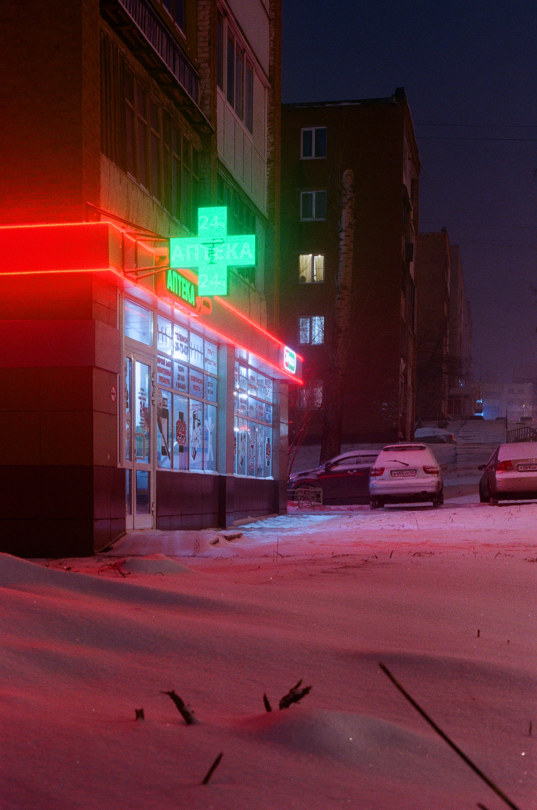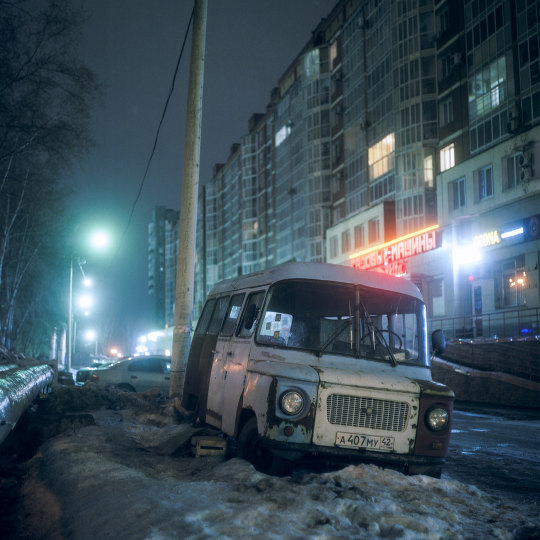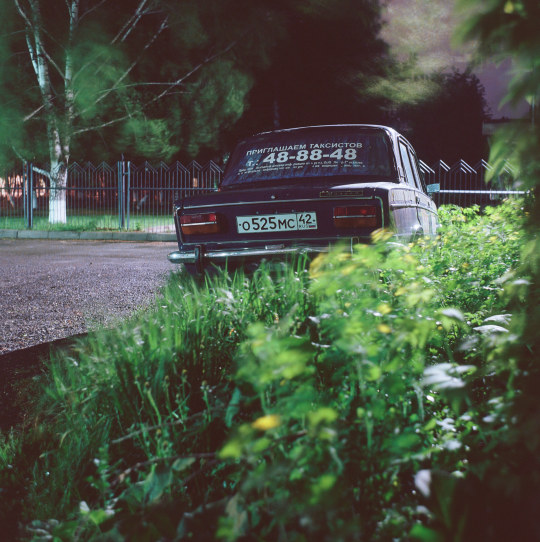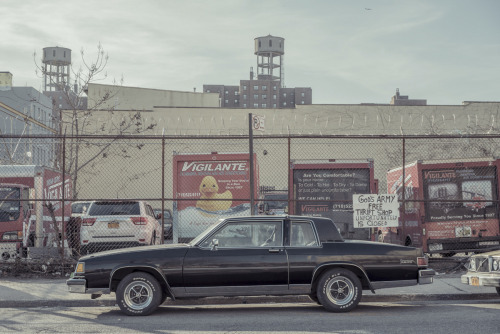#but my point is that its funny how despite being seen as undesirable for society i was unaffected bc i was oblivious to it
Photo

PHOT301 - Mileage May Vary - Research and Influences
Influence is a funny thing. Looking at other’s work has always seemed odd to me as it comes across as you’re ingesting what they create, and then recreating it. To me, it seems somewhat disingenuous to take someone else’s work and make it your own, as it doesn’t seem entirely conducive to create a body of work. Perhaps there’s a disconnect between looking at work, and being influenced by it. Because of this, I don’t tend to look at other photographers work nowadays. The ways that I ingest photographers is usually online, with social media applications - but sometimes I stumble across words of wisdom with passing visiting practitioners such as Nicholas J.R White or Jack Latham. As for social media, its people such as Vlad Tretiak. And past projects such Chris Dorley-Brown’s “Driver’s in the 1980′s”.
How do I get inspired? This, is the million dollar question. Inspiration has been always a stumbling block when it comes to my work: I don’t like looking at other people’s work and taking it and I rarely find work that truly resonates with me. I have always found it easier to shoot more often and see where my eye takes me. One could say that my eye is influenced by what I have ingested, and that could potentially be the case. The other thing that initially inspires me is the contextuality of my practice, which is usually philosophically based with some political undertones. My previous work played a lot on my own experiences living in a modern capitalist society - PHOT201 featured a lot of my own personal feelings on alienation/estrangement, and PHOT102 used my interests of Brutalism. In terms of PHOT301, this is spearheaded by the intrigue of the system that we live in, the 2008 Financial Crisis and the then Labour Government’s 2009 Scrappage Scheme. As well as this, there is the personal appreciation for the everyday vehicle. Mentioned in the post in the first shoot, I talk about how I grew to appreciate the car that the layman use on a day-to-day basis. Cars of a certain age were purged once the Labour Government unveiled the scheme to rid the roads of ageing vehicles, replacing them with newer, safer and more environmentally friendly options.
This scheme was set after the 2008 financial crisis, where banks were allowed to trade through a deregulated system, demanding mortgage schemes which they couldn’t necessarily pay back. This lead to banks like Northern Rock collapsing, which returned to private ownership, but dissolved in 2012. The global financial crisis of 2008 led to a mass recession across the western world, causing the most significant financial crisis since the great depression. In the 2009 budget, the Labour government unveiled the VSS as an incentive for motorists to trade their old car, get a discount, and get a brand new car which offers greater safety, reliability and environmentalism. Governmental information regarding the scheme is easily accessible on the internet, and can be see - https://www.gov.uk/government/uploads/system/uploads/attachment_data/file/357672/bis-foi-2014-20775-scrapped-vehicles-supporting-data.csv/preview .
With this link, one is able to download an Excel file which details all of the vehicles scrapped in 2009. This covers everyday cars of the day like the Rover 214 (of which 2045 were scrapped), as well as odd manufacturers such as Lada’s Riva, where 7 were scrapped. In total, 392227 cars were scrapped in total, according to the spreadsheet in 2009. The document can be seen here - https://drive.google.com/open?id=1azLGX99mmsL79kbA8qnUuV_C8_k3fI--

Meaning, the Government managed to get rid of a number not too far off of half a million undesirable vehicles from the scheme alone. That being said, there are some discrepancies within the document, such as potential duplicates and spelling errors which could hamper the end result.

Thankfully, the ever helpful Government have released a document with the results which states that there is some variability, as the information was collected by the manufactures instead of the Government itself for the VSS (Vehicle Scrappage Scheme). These numbers are fascinating to me - browsing the document also brought up some interesting results. A lot of the manufacturers that are/were stationed in the U.K, such as Ford, Nissan, Peugeot and Vauxhall recorded higher numbers compared to manufacturers such as Mercedes or Volvo for example. This means, there is some potential correlation between vehicle manufacturer location and scrappage numbers, as well as the type of manufacturer that’s marketed. Higher market vehicles, such as Mercedes again saw lower numbers in general, compared to a more consumer based manufacturer such as Toyota. Obviously, this would make sense are Toyota is more of an accessible option compared to Mercedes.
Top 5 Scrapped cars from 2009/2010
Ford Fiesta - 13622
Nissan Micra - 11808
Vauxhall Corsa - 10453
Volkswagen Polo - 8432
Vauxhall Astra - 8066
(info provided with the VSS Spreadsheet linked above)
This is intrinsically fascinating to me, as it puts into perspective the number of vehicles that were rid within the period of the scheme. Despite the high number of scrapped cars, many of these models still roam our streets. There is a great website titled ‘https://www.howmanyleft.co.uk/’, which collates Governmental data on cars that are left on our roads. The website can be used to search models of cars that are still being used today, which details cars that are being used on the road, as well as cars that have been SORN. For example, we saw that 2045 Rover 214s were scrapped in 2009. Today, there are only 155 left on the road, with 189 SORN (not on the road). The graph the website offers shows the rapid decline in 2009, correlating with the VSS. This can also be used to see the gradual decline of the vehicle’s usability, whether that’s due to owners discarding it or replacing it.

This information spearheads the project, mostly in it’s entirety. This projects sets to document what’s left behind from the VSS, as well as the vehicles themselves. Each one is different despite it being made identical in the factory with robots and humans. Each and every car has been used differently by different people, and this shows different ways in which it has been worn and battle torn. These can take the form of scrapes, dents and missing pieces of trim - which can sometimes be enough for one to scrap their car. Despite the scheme being scrapped in itself in 2010, VSSs are still being employed by manufacturers and website on the internet. This means that these cars aren’t all that safe after all. They might have missed the initial barrage of time, and the Government’s scheme, but at any moment they could be still given into the dealership and discarded, being recycled into a fancy washing machine or a bean tin. Manufacturers such as Citroen and Vauxhall still offer such schemes, with money-off incentives on new models, as well as a scheme in London set by Sadiq Khan, with vehicles such as mini vans and mopeds to be scrapped to reduce carbon emissions in London, with an ultra low emission zone in London by October 2021 (TfL, 2019).
There is also a somewhat philosophical aspect to this body of work, also. Hauntology has risen in popularity within the last decade, with Mark Fisher potentially reviving it into the focus of conversation with his easily accessible writing. At first, I found Derrida’s original explanations absolutely horrid to understand. His writing (to me, at least) was often confusing and convoluted. Thankfully, Fisher’s writing in Ghosts of my Life and What is Hauntology offer realistic and easily understandable explanations on what Hauntology really is, and how it’s applicable to our contemporary zeitgeist. It can really be distilled into ‘a time out of joint’ (p.21. Fisher. M. Ghosts of My Life). Hauntology is really the philosophy of the past haunting the present. Derrida links Communism being a spectre on western Capitalism. This, can be applied to almost anything within popular culture, in addition our world now. Fisher also mentions our futures, due to our mixture of past melding with our current times. Things have been increasing harder to see what the future really is, as our times become more anachronistic. This all plays into my work, in terms of subject and what it has been taken on. The cars themselves are inherently anachronistic, as they belong from a different time period. And, the images themselves have been taken on cameras that should, in essence, be extinct - hence digital photography has taken the spotlight in contemporary image making.
Although, film photography certainly is a spectre hanging over digital photographer, and offers up a form of spectral nature of itself. Yet, there is still a place and a market for analogue photography, despite companies either discontinuing their stock or raising prices. The rationale of shooting film is purely a personal choice. It isn’t because I think it’s better than digital, it’s because I enjoy the tactility of the equipment, and the process of scanning in a physical photograph. There are so many more nuances and variables that can’t be corrected once it has been taken, and can only really be corrected once it has been digitised with a scanner. It may even defeat the point when an analogue image is digitised, as the scanner is interpreting the tones and colours of the film with its processing and software - scanning with different scanners can vary everything about the film. I found this out when I bought my own Canoscan 9000F MKii in first year, and there is a massive quality difference between the Canoscan and my favourite scanner: the Epson V850 Pro. This, of course is due to the large price difference and aim towards the demographic. The Canoscan is aimed purely at the enthusiast who needs a scanner, and might potentially need to scan the odd roll of film. The Epson is of course aimed more towards the professional, with the increase in scan quality and scanning options. With this, there are quality differences, with the Epson scanning a lot flatter, with increased dynamic range, compared to the Canoscan’s odd colour cast and contrast increase.
Visual Inspiration
Vlad Tretiak - A Small Town in Siberia II
As mentioned before, I find visual inspiration often hard to come across, with a feeling of nihilism towards looking at photographers of the past. Many copy established photographers which to me, renders the image useless as you’re just recycling someone else’s project or aesthetic. I do feel that it’s good to look at photographers and take notes from what they create, but not totally rip off what they have already done. The biggest inspiration for my work at the moment is a little known photographer based in Russia, called Vlad Tretiak. He is a Russian based photographer and graphic designer. His work centres around parked cars in the dusk hours, with Tretiak often utilising street lights to enhance the aesthetic of the image. The cars he documents aren't brand new offerings from the automotive conglomerates; they're often bruised Ladas and Japanese obscurities, as well as documenting the spaces that these cars occupy.

The project doesn't just focus on the cars, but also the small town in Siberia, which is Kemerovo - a town closer to China than Moscow. The landscape is often ridden with Siberian snow and the town's neon lights creates an almost vaporwave feel to his work. They're also incredibly cinematic, with an almost tangible look and feel. Tretiak shoots mainly on a Pentacon Six or a Mamiya C33, often with expired film, such as using Kodak Aerocolour III; which has long since been expired. This gives Tretiak's work a hauntological aspect, as he is shooting scenes with film that shouldn't exist in this time (theoretically). With this, it creates a haunted present, as it's presented on a format that is from another time period - unlike shooting fresh film which has been produced in the contemporary sense, but uses the same formula.
All of these aspects makes Tretiak a key piece of research for Mileage May Vary, as it shares a lot of the same themes and aspects as mine. The biggest thing I can learn from A Small Town in Siberia II, is the use of lighting. My previous analogue night photography attempt was lacklustre purely due to the light, as well as not exposing the film for long enough to get some of the shadow detail. I do plan on shooting on some expired film for my project, and as older film usually needs longer to expose, this will lengthen the night exposures exponentially. Yet, Tretiak manages to keep these images looking crisp, clean and clinical. The images are incredibly sharp and features such a deep tonality. There aren’t many practitioners that when I look upon their work, I think to myself that this is what I want to be striving for. a lot of the time, I blankly gaze at work and nothing works for me, but there is something about how Tretiak manages to capture the scene, isolate the subject and use natural, and artificial light to his advantage. The scenes are also so mundane to the layman, as they are just Ladas being photographed in their natural environment in Russia.
This also has another link to Hauntology, as these cars are haunted by the spectre of Communism itself. They were born from the CCCP, lived through the state and now survive in a Capitalist Russia, and then they are documented on a process which has been superseded by a digital process. They’re scenes haunted by Communism, taken by a haunted process. It makes one think how omnipresent Hauntology really is, and this is the reality that we live in. It also makes me think that I have always had links to the CCCP and Hauntology without me really knowing. I have managed to document Brutalist structures and things of the past, but in the present; but its only now that I am able to see what I have been doing and it’s contexts.
Below, is a number of Tretiak’s images from that project which I really enjoy.





Chris Dorley - Brown - Drivers in the 1980′s
I came across Dorley-Brown’s work due to Jack Latham recommending his project to me to look at for MMV. The project in question is Drivers in the 1980′s; a documentation of drivers stuck in East London traffic jams in the summer months during the 80′s. Dorley-Brown initially wanted to document the privatisation of Rolls Royce, but instead chose to photograph the faces of the traffic jams of Thatcher’s Britain. For me, its a very humanising project to look upon, and feels slightly odd enjoying a body of work which features actual people. I often feel slightly alienated to look at work with people in them, as I don’t really have any or no connection to the subject. Yet, a lot of the images within this project feel very candid and Cartier-Bresson-esque in terms of their decisive moment feel. That being said, some of the subjects have noticed Dorley-Brown and posed for the camera, knowing they will be photographed and changed their pose ala-Barthes.
Speaking of Barthes, Dorley-Brown’s work feature both studium and punctum. The studium is the subject, and something about it that has jumped out to Dorley-Brown, and the punctum is the end result of that studium. And the end result is rather aesthetically pleasing for what is essentially a portrait of the urban environment.



There is an immediate aesthetic to these images that just shout out 1980′s, purely because of the tones and colours. There is something about these aspects of which I enjoy, and I am not entirely sure why that is. Perhaps its linked to nostalgia, as these was only taken 10 years before I was a small child, and I can remember seeing photographs in a similar style to these. Either that, or its the cars included in the photographs, which I used to see when I was younger and feel nostalgic about seeing; or that I have fallen for the Capitalist ploy to sell me nostalgia of the 1980′s despite never actually experiencing it first hand. There must be something with the emulsions used at the times, causing these bold, yet washed out colours. All of these photographs were taken with either a Rolleiflex 3.5 or a Mamiya C33 (as did Tretiak in ASTiSii). In addition, eight rolls of film were shot in a space of six hours, with a total of 162 photographs. Dorley-Brown is noted in saying about shooting the project:
“They are both waist-level finders so that put me at driver level and helped me be a bit more invisible,” he wrote via email. “People are never sure with those viewfinders whether you are looking at them or not so it gives you some space to work without appearing too obtrusive.”
This gives one insight in the creation of the work, and the use of a TLR camera. They are something that I really want to love, but hate using. Looking down at the viewfinder always feels very unnatural to me, and the inverted movements always throw me off. However, this hasn’t stopped me looking at purchasing a Mamiya C33 or equivalent down the line. Perhaps I will learn to love TLRs, just like I learned to love square format images, and seeing as the C33 is 6x6, its another hurdle to overcome.
Franck Bohbot - Parked Cars
Bohbot is a French born photographer and film maker based in New York. His images offer a cinematic and meticulous approach to image making. They also offer a certain atmosphere that juxtaposes the reality of the day to day. I will be focusing on Bohbot’s ‘Parked Cars’ project. I used Bohbot during the Economy Exhibition, as he used a very similar composition style to what I was already doing. I found the typography of his images very Becher-esque and visually intriguing, as its interesting to see a lot of cars presented like this.

Parked car, Parkslope #1 Brooklyn, NY, 2013

Parked car, Gowanus #5, Brooklyn, NY, 2014

Parked Car, Gowanus #6, Brooklyn

Untitled
Bohbot offers an interesting take on a typographic style of automotive photography. It manages to capture the vehicle, as well as the surrounding space around it. They often tell us things about the area as well, just like the state of the economy and the grade of social status of the occupants. The photographs also tell us what kind of life the vehicles have lead. Just like the Camaro Iroc-Z above, it has discoloured/faded panels. This could mean they have been replaced because its had a collision, or they have just faded over time. Red paint has a habit of doing that as the wavelengths absorb more light compared to other colours, and the UV light degrades the paint faster (oh my previous life as a mechanic and body repairer). This can also be seen on the Caprice Classic at the top, as that has heavily faded and also started to rust around the wheel arches. These elements especially reflect on what I am doing, and focusing on the cars that have aged and seen some years of use. These scrapes and scars can tell a story of what the vehicle has gone through, and shows that its just a mode of transport that someone uses.
Since looking at Bohbot’s work in first year, it has been updated with more detailed and less typographic images. An example is of the Pontiac GTO’s rear lights/badge. Just like my current work, it incorporates a more detailed look at the wear and tear of the vehicle, in addition to using a shallow DOF to isolate the subject.
A Coda
Being inspired and influenced by practitioners is something I find that’s hot anc cold. Quite often, I rarely find photographers that I really get and understand. It seems all too often I blankly stare at ones work and it doesn’t do a thing for me, and I tend to find it easier to just go out and shoot, without any prior research to see where my creative mind is at. Although, I do find that sometimes, one does need to ingest other’s work and get some insight into how they create that work - whether that is due to the camera or film they have used, or the way that they have composed and taken the photograph. Of course, this can be a valuable asset to the photographer to gain insight into how to make a photograph just that little bit better, or something to avoid if they haven’t executed it properly. With Tretiak, Dorley-Brown and Bohbot, they have certainly informed and influenced how I make my work. I enjoy all of their images, and find it fascinating how they actually make their work, as well as the context within them. Yet, these projects seem different, and oh so similar at the same time. Tretiak is documenting the vehicles that lay dormant where he resides, and Dorley-Brown documents similarly dormant cars, but in the hustle and bustle of the nation’s capital. Finally, Bohbot documents the dormant and parked cars in Brooklyn, where the social and economic background is vastly different to the Manhattan setting that most people think of when New York is mentioned. All of these play a key roll in my work, and are useful to further my practice.
I also find its key to have some contextual backing to the work. All the way back in PHOT202, I ditched anything contextual and focused on the aesthetic of the photograph. This wasn’t a great idea, as it totally sabotaged my grades and was harshly scrutinised - deservedly so. Just like a broken record, I repeat to say that I hated PHOT202 and it’s outcome. Now, I am creating work that I am proud to be attributed to and willing to progress with. MMV is a project that feels that it will last me a long time, as previous projects felt as if they died as soon as they were handed in and never felt as personal as they were portrayed to be. But somehow, MMV feels as if I can keep this project going, even past university is over for me. Perhaps this is because its something that I want to be creating, rather than interpreting a brief and making something fit with brute force.
Bibliography
Behance, (2019). A Small Town in Siberia II. Behance. [Online]. Available at https://www.behance.net/gallery/81633539/A-Small-Town-in-Siberia-II. [Accessed on 01/12/2019]
Franck Bohbot’s Portfolio. (2019). Franck Bohbot’s Portfolio - Parked cars | 2013-2015. [online] Available at: http://www.franckbohbot.com/parked-cars [Accessed 1 Dec. 2019].
Franck Bohbot’s Portfolio. (2019). Franck Bohbot’s Portfolio - Parked cars | 2013-2015. [online] Available at: http://www.franckbohbot.com/parked-cars#e-5 [Accessed 1 Dec. 2019].
Franck Bohbot’s Portfolio. (2019). Franck Bohbot’s Portfolio - Parked cars | 2013-2015. [online] Available at: http://www.franckbohbot.com/parked-cars#e-35 [Accessed 1 Dec. 2019].
Franck Bohbot’s Portfolio. (2019). Franck Bohbot’s Portfolio - Parked cars | 2013-2015. [online] Available at: http://www.franckbohbot.com/parked-cars#e-8 [Accessed 1 Dec. 2019].
Franck Bohbot’s Portfolio. (2019). Franck Bohbot’s Portfolio - Parked cars | 2013-2015. [online] Available at: https://www.franckbohbot.com/6914744-parked-cars#e-24 [Accessed 1 Dec. 2019]
Rosenberg, D., (2015). Being Stuck in Traffic Never Looked So Good. Slate. [Online]. Available at https://slate.com/culture/2015/06/chris-dorley-brown-drivers-in-the-1980s-is-a-look-back-at-london-car-culture-photos.html. [Accessed on 14/01/2020]
Fisher, M., (2014). Ghosts of My Life: Writings on Depression, Hauntology and Lost Futures. John Hunt Publishing (p.21.)
Jones, M., (2016). Angry drivers stuck in London traffic during the Eighties. British GQ. [Online]. Available at https://www.gq-magazine.co.uk/article/drivers-1980s-book-london-hoxton-press. [Accessed on 14/01/2020]
Transport for London, and Matters, E. J., (no date). ULEZ Car and motorcycle scrappage scheme. [Online]. Available at https://tfl.gov.uk/modes/driving/ultra-low-emission-zone/car-and-motorcycle-scrappage-scheme. [Accessed on 08/01/2020]
0 notes